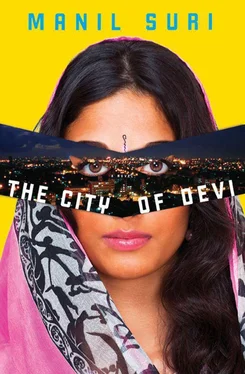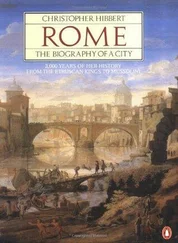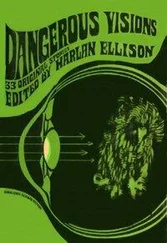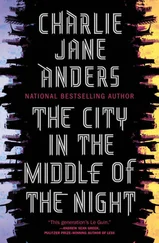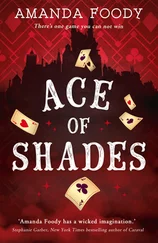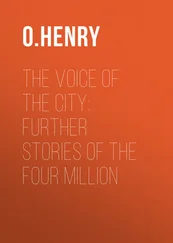I search for the alley leading to the railway corridor. After what I have witnessed, I’m too unnerved to continue on the roads—since the trains aren’t running, it makes more sense to walk along the tracks. I turn at the Barista coffee shop and look for an entry along the line of buildings. At the very end, I find a narrow gap in the wall, through which I pull myself. The tracks are as deserted as before. I begin the long trek in the direction of the Mumbai suburbs.
THE NIGHT HE TURNED away from me, Karun’s reaction left me so shocked that at first, I had trouble processing his words. “It’s too soon,” he may have said. “I need more time.” I couldn’t think of how to respond. Did he not find me attractive? If so, why had he married me?
“I was nervous even before the wedding. Not being used to any of this, not having had any experience. You can’t realize how much pressure it’s been.”
“I haven’t exactly been out practicing with other men either.”
“No, please don’t take me wrong—it’s entirely my fault. I’ve always been very reticent about such things. I thought it was just shyness, but it’s more than that—perhaps I need to know you better. Or perhaps you need to know me. I’m not explaining this very well—I’m sorry. If you could be patient, that’s all I’m asking.”
He wanted to continue sleeping together, continue cuddling. His contriteness seemed genuine, his proposal innocuous enough, so I agreed.
For the next several nights, we just slept. I had resolved to act stern and unaccommodating, but Karun was so solicitous, so apologetic, that I found my anger dissolving. I allowed him to wrap my arms around his body while going to sleep, to press his back into my bosom the way he liked. Sometimes he turned around to gaze at me, like an artist studying the fine points of a subject to paint it from memory. I reciprocated on these occasions, trying to absorb his essence through this shared experience of silent communing. Who was Karun? What did he feel? Beyond the atoms and molecules of which he was so knowledgeable, what constituted his being?
Once it ignited within me, I tried to subsume my physical longing in this curiosity. Each day when Karun left for work, I went through the flat, familiarizing myself intimately with his things. I buried my face in his shirts to see if I could discern a scent lingering from his body. I examined the pattern on each necktie to intuit what he found appealing. I noticed how he carefully folded each handkerchief, how he stored his socks rolled in pairs, how he stacked his underwear in orderly piles. Even the worn shoes he no longer used rested tidily in their original boxes.
I discovered Karun’s past under the bed, just as neatly organized. An old suitcase held toys and games, including miniatures of racing cars and jumbo jets and three boxes containing Lego pieces. A small attaché, the type used by schoolchildren, contained report cards all the way from kindergarten, chronologically arranged. I felt a curious kinship well up within as I leafed through a stack of prize citations similar to mine—science, mathematics, geography, and the inevitable “moral instruction” (which I also unfailingly earned every year). At the very bottom lay a bound copy of his Ph.D. thesis, “Non-Abelian evolution of chromo-Weibel instabilities based on hadronic spectra observables.” The fact that I found the title unintelligible (as he probably would my M.A. thesis on Fellegi-Holt models) made me smile.
In the last suitcase, behind two cartons of scientific books, a shock awaited me. I stared at the saris packed within, the dupattas and blouses, the salwaar kameez outfit. A small plastic container held earrings and bangles, inside another lay two necklaces and a ring. Had I just uncovered evidence of a past liaison? Did Karun have a romantic history he had failed to reveal?
Then I smelled the mothballs, noticed the men’s suits with the old-fashioned lapels and the heavy brocaded saris. The clothes, I realized, had to be his parents’—Karun must have saved them in remembrance. Packed in under the outfits lay a photo album. The first picture, of his parents, was identical to the one above the dining table—his father looking out jauntily at the camera, his mother gazing dreamily past, as if in the distance, she could see the panorama of the rest of her life. Karun appeared as a newborn on the next page, then as a toddler with a shock of black hair. I followed him over the years—posing in a rabbit costume with a carrot in his mouth, accepting a trophy for best Cub Scout, sitting with his parents in a plywood Mercedes prop at a photographer’s stall. I imagined myself in each photo, sharing each instant as he grew, insinuating myself into his life.
Abruptly, his father dropped out. The lines on his mother’s face deepened, and Karun smiled more uncertainly now, if at all. Hair sprouted on his lip and chin, a mustache appeared, then disappeared. He still projected the same innocence, but the expression in his eyes became harder to read. The last photograph showed him holding up a framed degree, his mother standing proudly next to him.
My snooping didn’t offend Karun—in fact, he found it amusing. Each day, I pulled out something different to ask about when he returned from work: which was his favorite board game? how old were his parents when they married? what prompted him to buy a pair of pants so parrot green? I took these opportunities to also tell him more about me. We pored over our albums together and compared his birthday photos with mine. One evening we forgot all about dinner, assembling the Lego into a giant structure resembling the Gateway of India (even though we had aimed for the Taj Mahal). I talked about my specialization in epidemiology, the drug tests I’d statistically analyze for Sandoz in the job starting next month. Karun tried explaining his dissertation—the gist (as far as I could tell) was the analysis of data from particle splitting to predict resulting instabilities.
The simplicity of Karun’s past, its lack of surprises, comforted me. How endearing to discover a story so manageable that the boxes accommodating it fit under only half the bed. I imagined my own story rubbing containers with his, taking up the room left. “He’s really like a child,” I updated Uma. “We’re only sleeping, so there’s no pressure at night.”
Except I always had an eye open towards advancing physical intimacy. By now, I’d learnt enough to be indirect, to tread delicately. Each night, I pulled Karun’s waist to my pelvis with the subtlest of motions, cradled his buttocks, pressed in against the back of his thighs. Once I knew he felt comfortable, I reversed our positions as a gentle invitation for him to reciprocate. I made a game of everything—rolling across the bed in an embrace, snuggling at the abdomen so that our belly buttons “kissed,” measuring distances on his body with my lips (six lip-lengths between his nipples, twelve from his Adam’s apple to his waist). I convinced him to teach me yoga, for which it seemed natural to suggest undressing down to our underwear once the mornings turned humid.
It felt a bit like getting swimming lessons again, without the water this time. Each morning before breakfast, Karun coaxed out the correct arcs from my body, adjusted the lines of my limbs. I learnt quickly—my knack for yoga greatly exceeded my aptitude for aquatics. Warrior pose became my favorite—I tried to sneak a peek in the mirror each time we performed it. The two of us reaching towards the open window as if in a ballet, sunlight streaming in to warm our faces and splash down our necks.
Sometimes we went through an asana with our bodies touching, pretending we were one person. The shared intensity of holding the position together led to a heightened awareness of the points of contact between us. We started performing tree pose this way, so that Karun could support my upraised hands to correct my frequent bouts of imbalance. Standing flamingo-like necessitated pressing the heel of one foot high into the split between the legs. Every tiny adjustment translated into a movement we both felt at our groins—it was difficult to ignore the rub and push at this focal point.
Читать дальше
